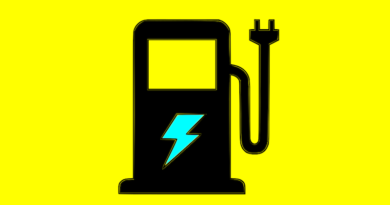EV charging and power quality – QnA with Shwetank Jain

Shwetank Jain – Founder and CEO at P2 Power answers our questions on Power Quality, and how the issue of Power Quality is relevant to EV charging.
What is meant by Power Quality?
Power Quality (PQ) has two aspects – Voltage and Current which are directly linked to each other. We can define power quality for current based on four load parameters i.e. Power factor, Harmonics, Unbalance and Neutral. These four parameters can directly assess the impact on the grid due to load characteristics. In the case of voltage, the major issues are Unbalance, Sags, Swells, Interruptions etc – these are factors that define the power quality of the source side.
Power Quality is important in order to safeguard the proper functioning of the power grid system and the loads connected to it. PQ requirements should be a characteristic of both parts of the system, i.e. the energy supplied by the power grid, as well as the energy consumed by the equipment connected to the grid.
What kind of power quality issues can be caused by EV charging?
Electric vehicle charging uses a large number of switch-mode power supplies where it converts AC to DC power to charge the battery. This conversion process, in turn, generates harmonics predominantly 3rd, 5th and 7th. The third harmonics don’t get cancelled at the star point and get added up in the neutral, increasing the neutral current drastically. This overheats the neutral and increases the NE (neutral to earth) voltage, which might be a major cause of concern for other electronic equipment in the vicinity.
In addition to this, most of the load distribution is balanced, but due to random charging patterns, we will always have instantaneous unbalance in the 3 phases. All these are major concerns related to power quality caused by EV chargers.
Do different kinds of chargers or charging patterns have a different impact on PQ?
Yes. There are three types of chargers. Single-phase AC chargers and two-phase AC chargers cause high neutral current and unbalance in the grid. Then we have DC chargers, which are 3-phase chargers that generate harmonics and have a leading power factor impact on the grid.
At what scale does electric vehicle charging become a significant factor in power quality?
Currently, EV charging is at its initial stages and therefore, the impact on the grid is not visible and, in fact, minuscule. But a surge in EVs is expected going forward. The next ten years will see a huge infusion of EVs and EV charging infrastructure, putting an extreme level of stress on the existing electrical infrastructure across the country. The electrical demand will almost double in the coming years. And as the percentage of EV charging and renewables increases in the grid, it will become more and more unstable.
Things need to be tackled proactively with proper regulations and equipment to safeguard the impact on the grid due to these power quality concerns raised by the growing EV charging infrastructure. When large-scale EVs are charged simultaneously, unwarranted peaks in power consumption and consequent PQ issues, including current distortion, increased power flow in power cables, transformer overloading, voltage drop, voltage imbalance and harmonic contamination, are bound to arise. In addition, EV charging at home will result in heavy single-phase loads in residential low voltage (LV) distribution systems.
Do we have any regulations in place to monitor and supervise the amount of harmonic distortion that can be introduced by EV charging?
In India, there are certain regulations in place for Power Quality, and they are applicable to all LT and HT consumers. Globally, in 2011 SAE issued power quality requirements for plug-in electric vehicle (PEV) chargers in response to rising sales of PEVs and concerns about their potential impact on utility systems and on other devices connected to them.
Electrical power is delivered upon demand, and utility systems are impacted by the demand of power and the duration of that demand. Distinctions must be made about real power, which does work, and apparent power, which is the impact on the electrical system.
With respect to harmonics, IEEE 519-2014 standard forms the basic guideline for harmonic regulation in India. The billing as recommended by CEA has to be through kVAh and most states have already implemented the same. kVAh billing automatically takes care of any deviation in power factor and penalises the user for leading as well as lagging power factor. Since the power quality recommended practice was issued, interest has emerged for measuring and regulating power quality and energy efficiency of EV charging systems and work is happening on improving the specifications of the EV chargers so that they are designed to take care of PQ issues internally.
What can charge point operators do to minimise their charging set-up impact on PQ?
The battery charging stations are power electronic devices that cause harmonic distortions in the distribution networks. The charge point operators can install Active power filters to ensure that they address the PQ impact of the charging infrastructure on the grid.
This solution is connected in shunt on the AC side of the EV chargers to solve the power quality problems. They prevent the propagation of harmonic distortions and also take care of leading and lagging power factors in the distribution network, eventually also helping CPOs to save on energy bills.
Any comments on the impact of EV charging on the overall power distribution system?
A large deployment of EVs and PHEVs is expected to lead to PQ problems for the existing power networks. A surge in EV penetration could result in violation of supply/demand matching and maintaining statutory voltage limits and distortions. Under certain operating conditions, it may also lead to power quality problems and voltage frequency control, voltage imbalance. The latter is unlikely to exceed the statutory limit if EVs are reasonably distributed among the three phases. Active power filters should be installed to minimize or even eliminate the effect of EVs on the network.
In addition to the above, it is really important that the chargers as well as EVs adopt V2G technology and can be seamlessly integrated into the grid. In fact, with appropriate control and communication with the grid, EVs could be designed to operate as part of the smart grid to provide ancillary services such as supply/demand matching and voltage/frequency control.
This article was first published in EVreporter September 2021 magazine.
Subscribe & Stay Informed
Subscribe today for free and stay on top of latest developments in EV domain.






